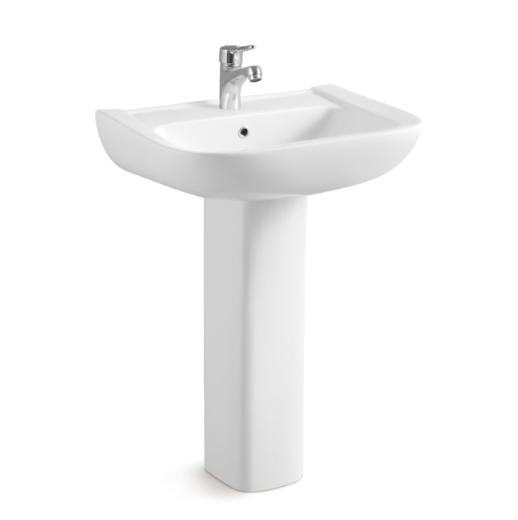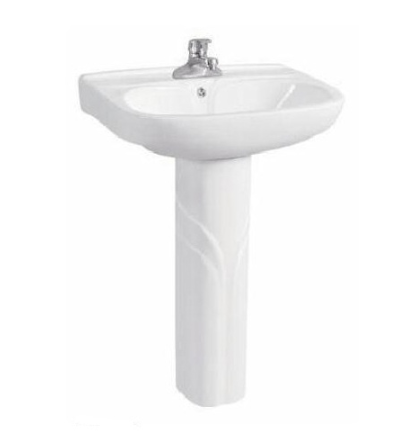8 Steps to Determine the Right Size Bathroom Sink
When designing or renovating a bathroom, choosing the right size sink is crucial. A sink that is too small can be inconvenient and impractical, while a sink that is too large can dominate the space and disrupt the flow of the room. In this article, we will discuss the factors to consider when choosing the right size bathroom sink.
Before you start shopping for a bathroom sink, there are a few key considerations to keep in mind. These include the size of your bathroom, your personal preferences, and the plumbing requirements of your home.
Step 1: Size of the Bathroom
The size of your bathroom will have a big impact on the size of sink you can choose. If you have a small bathroom, for example, you may need to opt for a smaller sink in order to make the most of the available space. On the other hand, if you have a larger bathroom, you may be able to choose a larger sink that can accommodate multiple users or provide more counter space.
For small bathrooms, consider a pedestal sink or a wall-mounted sink. These options take up less floor space and can make the room feel more open. For medium-sized bathrooms, a drop-in or undermount sink can be a good choice. These sinks are available in a variety of sizes and styles and can be customized to fit your specific needs. For larger bathrooms, a double vanity or a vessel sink can provide ample counter space and a luxurious feel.
For small bathrooms, consider a pedestal sink or a wall-mounted sink. These options take up less floor space and can make the room feel more open. For medium-sized bathrooms, a drop-in or undermount sink can be a good choice. These sinks are available in a variety of sizes and styles and can be customized to fit your specific needs. For larger bathrooms, a double vanity or a vessel sink can provide ample counter space and a luxurious feel.
Step 2: Personal Preferences
Your personal preferences will also play a role in the size and style of sink you choose. Think about the overall design aesthetic you want to achieve in your bathroom, as well as any specific features you are looking for in a sink.
If you prefer a modern or minimalist design, for example, you may want to consider a sleek, streamlined sink with clean lines and a simple design. On the other hand, if you prefer a more traditional look, you may want to opt for a pedestal sink or a drop-in sink with decorative features like a scalloped edge or a raised lip.
If you prefer a modern or minimalist design, for example, you may want to consider a sleek, streamlined sink with clean lines and a simple design. On the other hand, if you prefer a more traditional look, you may want to opt for a pedestal sink or a drop-in sink with decorative features like a scalloped edge or a raised lip.
Step 3: Depth of the Sink
The depth of the sink is another important consideration. A shallow sink may be more comfortable for some users, while a deeper sink can be more practical for tasks like washing your face or filling up a bucket. Consider how you will be using the sink and choose a depth that is appropriate for your needs.
Step 4: Number of Sink Basins
The number of sink basins is also important to consider. If you have a large family or frequently host guests, a double sink can be a practical choice. However, if you have limited space or prefer a more minimalist look, a single sink may be a better option.
Step 5: Plumbing Considerations
Finally, it is important to consider the plumbing requirements of your home when choosing a bathroom sink. The location of existing plumbing and the placement of the sink will impact the size and style of sink you can choose. Additionally, drainage requirements will need to be taken into account to ensure that the sink is installed properly and functions effectively.
Step 6: Sink Materials and Styles
Once you have considered the practical and aesthetic factors involved in choosing a bathroom sink, it's time to think about materials and styles. Bathroom sinks are available in a variety of materials, each with its own unique features and benefits.
Step 7: Materials
Porcelain is a popular choice for bathroom sinks due to its durability, affordability, and classic look. Glass sinks are another stylish option that can create a modern, sophisticated look. Stone sinks, such as those made from granite or marble, can provide a luxurious feel and are highly durable. Stainless steel sinks are also a popular choice due to their durability and low maintenance requirements.
Step 8: Styles
Pedestal sinks are a classic option that can work well in small bathrooms or in bathrooms with a traditional design aesthetic. They are characterized by a freestanding base that supports the sink bowl, creating an elegant and refined look.
●Wall-mounted sinks are another space-saving option that can be a good choice for small bathrooms. These sinks are mounted directly to the wall, which frees up floor space and creates a clean, minimalist look.
●Drop-in sinks, also known as self-rimming sinks, are installed by dropping the sink into a hole cut into the countertop. The lip of the sink sits on top of the countertop, creating a seamless look. This type of sink is easy to install and can be a good choice for homeowners who want to update their bathroom without making major changes to the plumbing or countertop.
●Undermount sinks are installed beneath the countertop, creating a sleek and streamlined look. This type of sink is ideal for modern or minimalist bathrooms and can be customized to fit a variety of countertop materials, such as granite, marble, or quartz.
●Vessel sinks are a statement-making option that can add a touch of luxury to any bathroom. These sinks are mounted on top of the countertop, rather than being recessed into it. They are available in a variety of shapes, sizes, and materials, and can be a great way to add visual interest to a bathroom design.
●Wall-mounted sinks are another space-saving option that can be a good choice for small bathrooms. These sinks are mounted directly to the wall, which frees up floor space and creates a clean, minimalist look.
●Drop-in sinks, also known as self-rimming sinks, are installed by dropping the sink into a hole cut into the countertop. The lip of the sink sits on top of the countertop, creating a seamless look. This type of sink is easy to install and can be a good choice for homeowners who want to update their bathroom without making major changes to the plumbing or countertop.
●Undermount sinks are installed beneath the countertop, creating a sleek and streamlined look. This type of sink is ideal for modern or minimalist bathrooms and can be customized to fit a variety of countertop materials, such as granite, marble, or quartz.
●Vessel sinks are a statement-making option that can add a touch of luxury to any bathroom. These sinks are mounted on top of the countertop, rather than being recessed into it. They are available in a variety of shapes, sizes, and materials, and can be a great way to add visual interest to a bathroom design.
Conclusion
Choosing the right size bathroom sink requires careful consideration of a variety of factors, including the size of the bathroom, your personal preferences, and the plumbing requirements of your home. By taking the time to think about these factors and explore the different materials and styles available, you can find a sink that not only looks great, but also meets your functional needs. With the right sink, your bathroom can become a functional and stylish space that you will enjoy using for years to come.



